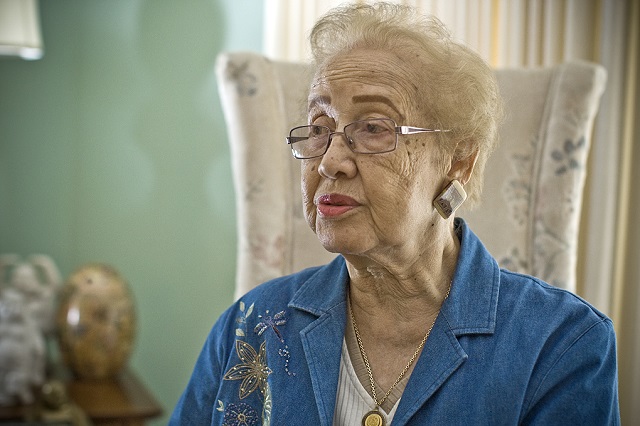If you didn’t have a computer, could you send a rocket into space and back? Katherine Johnson did. Her brilliant mathematical mind took her from small-town West Virginia to NASA, where she helped land a man on the moon.
Johnson, who died February 24 at age 101, was one of three mathematicians celebrated in the 2016 film Hidden Figures, which portrayed how, as black women, they overcame discrimination to play a key role at NASA during the space race. Because of her accomplishments, President Obama awarded her the Presidential Medal of Freedom in 2015, and Congress awarded her the Congressional Gold Medal in 2019.
“Most Americans have no idea that from the 1940s through the 1960s, a cadre of African-American women formed part of the country’s space workforce,” said Margot Lee Shetterly, author of the 2016 book Hidden Figures, on which the Academy Award-nominated film was based.
Johnson’s calculations were instrumental in every major space flight program, from Mercury to Apollo to the space shuttle. She retired in 1986.
Led by her smarts
Johnson always seemed to outgrow her classes. At the age of 10, she started secondary school. When she had taken every advanced mathematics course at West Virginia State College, professors created new courses for her. She finished college at age 18.
After a stint as a schoolteacher, she was chosen to be one of the first three black students to integrate West Virginia University’s graduate school. Then, in 1953 she moved to Virginia to work as a “computer” in 1953 at what would become NASA. There, Johnson was expected to simply plug numbers into other engineers’ formulas all day. But her mathematical skills and strategic thinking quickly made her indispensable. The all-male space flight research group requested her for their team.

Katherine Johnson, 97 when this photo was taken, was instrumental in every major NASA space program from Mercury to the space shuttle. (NASA)
It wasn’t always easy. She was told women didn’t attend high-level meetings with engineers and flight researchers. But Johnson questioned the policy, and got a spot at the table.
Johnson’s math mapped the flight of Alan Shepard, who became the first American in space in 1961. Her reputation was such that when John Glenn was preparing for his first orbital flight in 1962, he didn’t trust the calculations made by NASA’s new electronic computers. He requested that Johnson check the math.

President Obama awards Katherine Johnson the Presidential Medal of Freedom. (© AP Images)
Johnson said her proudest achievement was figuring the launch window for Apollo 11. While the world watched Neil Armstrong take the first steps on the moon on July 20, 1969, Johnson said, “we were really concerned when they were leaving the moon, going back. He had to do it just as we said. If he missed it by a degree, he doesn’t get into orbit.”
“I was looking at the television; I said, ‘Boy, I hope he’s got that right.’ And I was sitting there hoping I’m right too,” she laughed.
As NASA concluded when President Obama awarded Johnson the Presidential Medal of Freedom in 2015: “Not bad, for a little girl from West Virginia, who coincidentally (or maybe not) was born on August 26: Women’s Equality Day.”
Banner Image: Katherine Johnson at her desk at the Langley Research Center in Virginia, where she worked from 1953 to 1986. Langley dedicated a computing facility to her in 2016. (NASA)







COMMENTS0
LEAVE A COMMENT
TOP